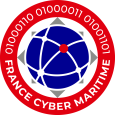Act on your cyber exposure
before it impacts your business
Know what you have. Fix what matters. Prove you're secure with our CISO-as-a-Service platform built for SMBs.
What is CTEM
You're Fighting Yesterday's Threats with Tomorrow's Attack Surface
Every month, your business faces an average of 8,000+ security exposures that demand attention. Traditional vulnerability management asks the wrong question: "What vulnerabilities exist?" The right question is: "Which exposures can actually harm my business?"
The CTEM Advantage
Business-Context Security
Prioritize threats based on impact to your revenue, not just technical severity
Proactive Protection
Stop playing whack-a-mole with alerts—see the attack paths that actually threaten your critical assets
Measurable Results
Track security improvements in language executives understand, with clear ROI on every fix
"The objective of CTEM is to get a consistent, actionable security posture improvement plan that business executives can understand and architecture teams can act upon."Gartner
How It Works
Our proven 4-step process transforms your cybersecurity from reactive to proactive, giving you complete visibility and control over your digital security.
Discovery
We scan your entire digital footprint to identify all assets, vulnerabilities, and potential attack vectors.
Assessment
Our AI-powered platform analyzes your security posture and provides actionable insights with risk prioritization.
Remediation
Get step-by-step guidance to fix critical vulnerabilities and improve your security posture systematically.
Monitoring
Continuous monitoring and automated alerts keep you protected against emerging threats and new vulnerabilities.
What Makes XRATOR Different
We're not just another security tool. We're your strategic partner in building a resilient cybersecurity foundation.
CISO-as-a-Service
Get enterprise-grade security leadership without the enterprise price tag. Our platform provides the strategic guidance and oversight you need.
AI-Powered Insights
Our advanced AI analyzes your entire security posture and provides actionable recommendations prioritized by business impact.
Proven Methodology
Built on years of real-world experience, our approach has helped hundreds of organizations strengthen their security posture.
Continuous Monitoring
Don't just assess once. Our platform continuously monitors your environment and alerts you to new threats and vulnerabilities.
The XRATOR Platform
Asset Discovery
Automatically discover and catalog all your digital assets, from cloud services to on-premise infrastructure.
Vulnerability Assessment
Comprehensive scanning and analysis to identify security gaps and prioritize remediation efforts.
Threat Intelligence
Stay ahead of emerging threats with real-time intelligence and proactive threat hunting capabilities.
Compliance Management
Streamline compliance efforts with automated reporting and continuous monitoring for major frameworks.
Automated Compliance
Streamlined regulatory compliance processes with industry standards alignment.
Threat Intelligence Integration
Real-time threat intelligence feeds with emerging threat and vulnerability updates.
Our Ecosystem










The XRATOR platform has been a game changer to our preventive cyber security strategy by helping us identify and mitigate potential threats. It allows us to grow at a rapid pace without compromising the security of our customers' data. And the platform integrates seamlessly with our existing infrastructure.
 Scot Mason
Scot MasonXRATOR gives me instant 360° visibility across our entire infrastructure, lets me verify our MSP's performance, and enables clear communication with our Board. The ROI is obvious: less time spent on coordination, and real peace of mind when facing cyber challenges. Leadership understands what are the priorities.
 Patrick Da Fonseca
Patrick Da FonsecaMeet the Founders
XRATOR was created by three cybersecurity leaders with decades of experience across threat intelligence, enterprise security, and platform engineering.

François Moerman
CEO & Co-founder
Former Ministry of Defense cybersecurity leader with extensive experience in government-level security operations.

Nicolas Striebig
CSO & Co-founder
Former offensive security expert at Ministry of Defense and Local CISO at AXA, bridging business needs with security expertise.

Ronan Mouchoux
CTO & Co-founder
Product leader with background at Kaspersky and Airbus, specializing in Threat Intelligence powered security solutions.
We believe that cybersecurity should be accessible, understandable, and actionable for every business. That's why we built XRATOR - to bridge the gap between enterprise security and SMB needs.— The XRATOR Team
Trusted by Leading MSPs
We partner with managed service providers to deliver comprehensive cybersecurity solutions to their clients.
Why MSPs Choose XRATOR
Enhanced Security
Access to enterprise-grade cybersecurity tools and expertise.
Cost Savings
Reduce security infrastructure costs while improving protection.
Expert Support
24/7 access to cybersecurity experts and dedicated support.
Compliance Ready
Built-in compliance frameworks and automated reporting.
Ready to Partner with XRATOR?
Join our network of trusted MSP partners and start delivering enterprise-grade cybersecurity to your clients today.
Find the best plan for your business
Starter
Perfect for small teams starting their security journey.
- ✔️Base Vulnerability Platform
- ✔️Module 1: External Surface
- CISO Consulting (Days): 6
Professional
For growing businesses needing dedicated security.
- ✔️Base Vulnerability Platform
- ✔️Module 1: External Surface
- CISO Consulting (Days): 12
Enterprise
Custom solutions for enterprises with unique needs.
- Base Vulnerability Platform: On Demand
- Module 1: External Surface: On Demand
- CISO Consulting (Days): On Demand
Frequently Asked Questions
Everything you need to know about XRATOR and our cybersecurity platform.
XRATOR combines AI-powered technology with human expertise to provide a comprehensive CISO-as-a-Service solution. We don't just identify vulnerabilities - we help you understand their business impact and provide actionable remediation guidance.
You can start your free 24-hour assessment immediately. Our platform is designed to be up and running quickly, with initial insights available within hours.
While our platform is built for SMBs, we work with organizations of all sizes. Our scalable solution grows with your business.
Yes, we provide continuous monitoring, regular assessments, and ongoing support to ensure your security posture remains strong.



